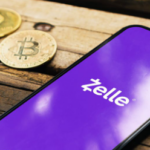About Texture Finance
Texture Finance team are profound believers in the benefits that crypto and DeFi can bring to the world, and that Solana – due to its inherent characteristics – is well suited to be one of the driving forces of crypto adoption.
| Compound | Facts |
|---|---|
| Defi Coin Name | Texture Finance |
| Short Name | TF |
| Total Supply | N/A |
| Ethereum Contract | N/A |
| Chat Option | Click Here To Visit Compound Chat |
| Document | Click Here To View Document |
| Official Website | Click Here To Visit |
Features
Easy-to-Use DeFi:
Building sophisticated products which are easy to use and to understand, both for DeFi experts and newbies, making complex products simple all with a clear and intuitive UI/UX.
Transparency:
clear communication of the products’ mechanics and risks involved are instrumental to earn the trust of the community. Check out Twitter where we’ll be sharing insights on our thought process, challenges faced and how they have been overcome, maths behind the strategies and features ensuring security of users’ funds.
Get up to 15% APY, automated and hassle-free
Leveraged staking made easy. Texture stakes your SOL with Lido and then deposits stSOL to Solend to borrow more SOL and repeat. Automated rewards conversion and compounding.
Texture looks after your leveraged position, so you don’t have to
Texture takes care of it and automatically repays debt, adjusts leverage and makes sure that your position is profitable.
Risk Management:
Texture is here for the long game, meaning while we want to offer highest possible yields to users, these have to be delivered via robust smart contracts able to endure times of high volatility and corner case scenarios, with appropriate safeguard mechanics in place. Texture’s smart contracts are rigorously tested by its dev team and audited by leading blockchain auditors before mainnet launch.
SOL Power Yield Strategy
Texture’s SOL Power Yield Strategy is an algorithmic strategy utilising the arbitrage between (i) staked SOL staking and deposit-on-lending-platforms yields vs (ii) the cost of SOL borrow on the corresponding lending platform. When (i) is higher than (ii), one can profitably lever up her SOL staking position to maximise the yield on the initial SOL deposit.
The steps to implement this strategy manually would be:
- 1.Stake your SOL with one of the liquid staking protocols
- 2.Deposit the staked SOL tokens with one of the borrow-lending protocols
- 3.Borrow SOL against your staked SOL deposit
- 4.Repeat steps (1) to (3) as many times as your risk appetite (and time you are willing to spend) permit, finishing with step (2) on your final loop
- 5.Harvest any farming rewards earned in the steps above in a timely manner, swap for SOL and redeploy back into the strategy to compound and maximise returns
Texture Flash Loans
A Flash Loan is a feature that allows you to borrow assets from a liquidity pool and repay them, plus a small fee, within the same transaction. Unlike traditional borrow-lending liquidity pools, you don’t have to supply any collateral prior to borrowing the funds.
Originally invented by Marble Protocol and popularised by AAVE and dYdX, Flash Loans are useful for the Solana DeFi ecosystem as well and will open opportunities for capital efficient arbitrage, collateral swapping and self liquidations.
Technical Guide
Texture Flash Loans are open for usage via one of the following SDKs (and more to come soon):
- Rust SDK
- Type Script SDK
- Python SDK
Architecture
The Texture Flash Loan protocol is implemented as an on-chain Solana program.
Most important on-chain entity the program operates on are Reserves. Reserve is a structure containing everything needed to use flash loans for a particular token. The following information can be found within the Reserve:
- available liquidity for a specific token, e.g. how much wSOL is available for borrow
- and address of the corresponding wallet, which is controlled by a smart contract
Additionally Reserve contains information about Liquidity Provider (LP) tokens mined for this Reserve.
Interfaces for depositing and withdrawing funds into liquidity pools will be soon implemented on Texture’s website.








